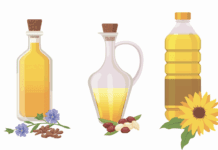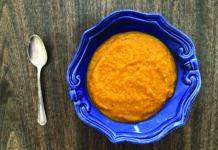Answer :Lynne M. Ausman, ScD, a professor in the Friedman School and scientist in Tufts HNRCA Cardiovascular Nutrition Laboratory, explains, On heating, fats tend to break down. This varies with temperature and degree of purity of fat. For example, the triglyceride molecule breaks down into glycerol and three fatty acids. Continuous heat causes the glycerol to form a molecule called acrolein, which is irritating to eyes and throat. The purified oils usually used for baking (corn, canola, cottonseed, soybean) have smoke points somewhat above 400 degrees Fahrenheit. Baking is usually done at temperatures of 325-375 degrees, although recipes may vary. Moreover, baking should be less dangerous than just heating a straight oil (as in deep-fat fryer).
As long as you choose oils that are recommended for baking, rather than for low-temperature sauting or dressing salads, you shouldnt have to worry about burning instead of baking. Even very high heat wont break down some oils: Soybean oil, for example, has a smoke point of 495 degrees, and safflower oil doesnt reach its smoke point until 510 degrees-hotter than most ovens can bake.



















